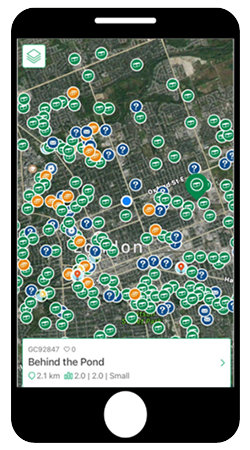FIMS News
Contact Information
FIMS Communications
Becky Blue
Email
519-661-2111x88493
FIMS & Nursing Building
Rm 2060C
Forest City Memories: Rethinking London's Past and Present
By Sophie Allan
May 2022
 Professor Basil Chiasson loves to explore and is working to bring the same experience to Londoners interested to know more historical secrets about their city.
Professor Basil Chiasson loves to explore and is working to bring the same experience to Londoners interested to know more historical secrets about their city.
Many Londoners might not realize just how diverse and rich the history of their Southwestern Ontario city is. London’s underrepresented and silent past is the main motivation behind Professor Basil Chiasson’s current research project, titled Forest City Memories: Rethinking London’s Past and Present.
Chiasson, an Assistant Professor in the Faculty of Information & Media Studies at Western University, is working with media studies graduate students Athena Nadalin and Kaitlyn Adam to explore what memorial culture is visible and also missing throughout the London area. They are surveying physical features of the landscape such as monuments, memorials, public art installations, and even street names to enrich and complicate widely shared perceptions of the city’s history.
As someone who has a background in professional music and acting, Chiasson began imagining the city’s geography, infrastructure, monuments, and memorials as a kind of performance. A social and historical performance that tells many stories, some of them hidden, which are open to interpretation.
“I started thinking about how a city performs—critical geography and different ways of articulating what a city is doing and how its landscape gets curated by a range of citizens and stakeholders,” he says.
Key Discovery
While looking through information related to the city's infrastructure, the team discovered that very few streets in London are named after women.
Women’s history, Black history, Indigenous history, and LGBTQ+ history, for example, exist throughout London, he says, but it is not always on display or easily found. This work aims to help people experience the city in new ways.
Forest City Memories: Rethinking London’s Past and Present proposes alternative narratives of London and encourages citizens to physically explore and critically engage with the information. The team is developing a geocaching application that leads people through seven scavenger hunts highlighting less prominent historical artifacts in London. Once participants reach the desired location, a container can be found that encourages additional thought and reflection. Examples of the containers’ contents include poems and images related to the location. The app is primarily aimed at tourists and citizens of London.
Chiasson’s team has been working on this project together since the summer of 2021, when Nadalin and Adam, both MIT students at the time, were accepted into Western’s Undergraduate Summer Research Internship program. The USRI program was created to benefit students, who can gain valuable practical research experience, and researchers, who can use extra hands and minds in the course of their work.
The team are extending their database and geospatial hub this summer, continuing to discover information through interviews with patrons in the London community, and eventually, launch a website to complement the geocaching tour by providing additional context.
Ultimately, Chiasson hopes that this work will help others to develop an “increasingly meaningful relationship with London through punching beneath the surface.”
----
This profile is part of a series written by graduate students in MMJC 9604 Professional Writing, during the Winter 2022 term. Profiles have been edited by FIMS Communications staff for clarity.


